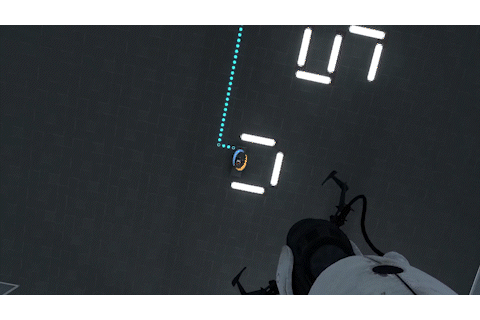THE FLINGING: A PORTAL 2 PUZZLE MAP
Steam Workshop Link: The Flinging
Gameplay Video
It is strongly recommended to try out the level first before watching the gameplay video as it contains spoilers.
Pre-Production
Pre-production is the first step of the level design process with its goal to figure out what the level is about. Pacing is crucial for this single player linear puzzle level. Thus besides the experience goals and the mechanics, the pacing of the level will also be a center topic for the pre-production.
Experience Goals
Below is a list of experience goals for this level. It can be an experience as tutorial such as the player should learn to use the flinging technique. Or a kind of emotion the level should evoke. There are also activities the player should experience in the level. The goals in red are the main goals or pillars that should be prioritized when designing the level. The crossed-out goal was excluded from the list after some initial block out tests. The tests shows that there was just too many mechanics to squeeze in for the current scope. Adding the gel mechanics into the level requires matching tutorials in the beginning, which quickly bloats the level.
The player should learn how to use different flinging techniques (tutorial)
The player should learn how to use jump gel and speed gel. (tutorial)
The player should learn how to use cube and activate the button. (tutorial)
The player should feel the thrill and excitement of high speed maneuvering through flinging. (emotion)
The player should have a moment of catharsis after finishing the intense actions in the level. (emotion)
The player should do many flinging movements and perform stunts like catching a falling cube in midair. (activity)
Mechanics
Portal 2 provides a humongous amount of mechanics that players can interact with. But it is possible to put them into three general categories.
The ability to make portals with the portal gun
Basic movement. Move/Jump/Crouch
Interactable items and devices
The pillar experiences revolve around the flinging technique: be it teaching the player how to use the flinging technique or performing them later in different variations to solve challenges. So the mechanics to put into the level should also bed anchored on enabling and maximizing possible flinging opportunities. (Flinging refers to a technique in Portal games that makes the exchange between the potential energy and the kinetic energy of the player possible and thus enables the player to accumulate a high speed or reach a high position. A detailed explanation can be found here)
Flinging is not a mechanics-heavy technique. It only requires two elements: the ability to make portals and portable surfaces in different height that creates a difference in potential energy. Thus we will keep the mechanics involved to a minimum and focus more on the geometry of the level to create challenges. This also cuts down the cognitive load for players to learn new mechanics. One scene that keeps playing out in my mind that I think is really fun to do is the stunt of catching a falling cube while the player is flying in mid-air. Thus besides the basic mechanics of making portals, the level should also introduce how to interact with cubes, including pressing a button to release a new cube, picking up a cube, using them to activate weight-sensitive switches, and catching a falling cube.
Pacing
Beat sheet
The level is centered on the flinging technique and I already had in mind several puzzles that explores the flinging.
The Climb. This puzzle beat requires the player to flinging themselves successively in vertical to climb up a stack of platforms.
The Button. This puzzle beat tests the player’s ability to use platforms of different height to accumulate a vertical speed to reach the button on the ceiling.
The Catch. This puzzle is about timing. The player has to time their jump through the portal well enough to catch a falling cube.
Tutorial beats are also necessary in order to teach the player the basics. The tutorial beats also have to come before the main gameplay beats about flinging. Below are a list of things the player needs to learn before taking on the flinging puzzles.
Teaching player the causality between pressing the button and the releasing of cubes.
Teaching player that the cube can be used to activate button switches.
Teaching player that catching a falling cube is also possible.
The Climb
Leverage the portal’s ability of momentum preservation to climb up the platforms.
The Button
Play around with platforms of different height to build up the maximum height to reach the button.
The Catch
Time your jump to grab the falling cube while flying.
Layout
The two green-circled surfaces are created as safety net so that when the player falls to the ground level they can portal themselves back up.
Blockout
Narrative
Environmental storytelling: a narrative fragment









